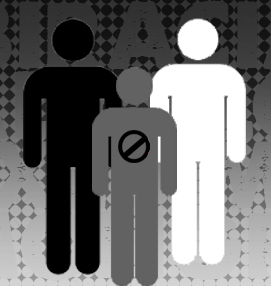The flurry of condemnation following the anti-war demonstration held during General David Petraeus’s speech last Thursday has made it one of the most notorious protests held at Georgetown in recent memory. A Jan. 22 editorial in The Hoya branded the protest as “an embarrassment to this University,” while the Georgetown University Student Association passed a resolution to condemn “the disrespectful and improper actions of the Georgetown students.” Yesterday, a counter-protest was held in Red Square, in which one speaker denounced the protesters’ actions as “disgusting.”
The widespread negative reaction to the protesters might create the impression that Georgetown is a conservative university, intolerant of anti-war sentiment. This establishment image is reinforced by frequent speeches by government officials and the large number of alumni working on the Hill.
Yet as staid as Georgetown may seem, our school was once a bastion of political protest.
In September 1971, John Kerry, then the leading spokesman for Vietnam Veterans Against the War, gave a speech in Gaston Hall and received a standing ovation. During the famous May Day Protests in May 1971, hundreds of anti-war activists sought refuge from the police on the Georgetown campus after a demonstration. When the police arrived at the University, they entered through the main gates, and fired teargas which drifted into student dorms. After the incident, students responded with strong support for the protesters. The president of the student body requested that the University take legal action against the police, and other students drafted a Student Bill of Rights which asserted that students “shall be free to examine and discuss all questions of interest to them.”
Perhaps most notable was the decision of some students to create an organization to protect student rights. They called the organization Students of Georgetown Incorporated, and every student of Georgetown was considered a shareholder. The Corp eventually became the largest solely student-run corporation in the world, but few know of its roots in the protest of the Vietnam War.
The contrast is striking between the student body’s critical response to the protesters at the Petraeus speech and the support for anti-war protesters in the early 1970s. Then, protesters were sheltered by Georgetown students from the pursuing police; today students urge police to forcibly remove protesters from Georgetown buildings.
The lack of supporters for today’s protesters is due in part to their uncivil tactics, but mostly reflects the pervading attitudes toward today’s wars. A 1971 Gallup Survey showed that only 34 percent of college-aged Americans supported the Vietnam War. In 2009, by contrast, 46 percent of college-aged Americans support the War in Afghanistan, according to a September Gallup Survey. With the War in Afghanistan more popular than the Vietnam War, today’s protesters cannot expect the warm reception their predecessors received.
The protesters of today’s wars should avoid controversial and bold protests, because only a small percentage of the campus will support them. Instead, they should focus on more low-key efforts to challenge students’ views on the war, which will be far more effective than interruptions and incivility.
Want to picket Galen’s lines? Email him at gweber@georgetownvoice.com.



